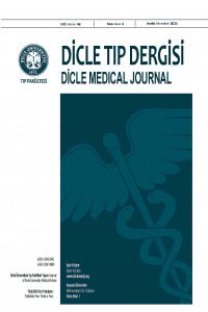The reasons for conversion from laparoscopic appendectomy to open surgery in children: the first experience on 100 cases in a single center
Conversion, Laparoscopic Appendectomy, Children. Open Surgery
___
- 1. Masurkar AA. Laparoscopic Trans-Abdominal Retromuscular (TARM) Repair for Ventral Hernia: A Novel, Low-Cost Technique for Sublay and Posterior Component Separation. World J Surg. 2020; 44: 1081-5.
- 2. Semm K. Endoscopic appendectomy. Endoscopy.1983; 15: 59–64.
- ISSN: 1300-2945
- Yayın Aralığı: 4
- Başlangıç: 1963
- Yayıncı: Cahfer GÜLOĞLU
Türk Popülasyonunda ABCC2 İlaç Taşıyıcı Genin 1249G>A Genetik Varyasyonunun Araştırılması
Measurement of Glomerular Area in Primary Glomerular Diseases With a Digital Pathology Software
Didem TURGUT, Aysel ÇOLAK, Simal KÖKSAL CEVHER, Ezgi COŞKUN YENİGÜN, Fatih DEDE
Ebru CELIK, Halil Mahir KAPLAN, Ergin ŞİNGİRİK, Muhammed Salih ÇELİK, Harun ALP
Servikal ve Jeneralize Distonide Periferik Sessiz Periyot
Melih TÜTÜNCÜ, Hikmat ABBASZADE, Ayşegül GÜNDÜZ, Meral E. KIZILTAN
Cemal POLAT, Nuriye METE, Murat SÖKER
Mine KARAHAN, Atılım Armağan DEMİRTAŞ
Atike Gökçen DEMİRAY, Arzu YAREN, Burcu YAPAR TASKÖYLÜ, Serkan DEĞİRMENCİOĞLU, Gamze GÖKÖZ DOĞU
